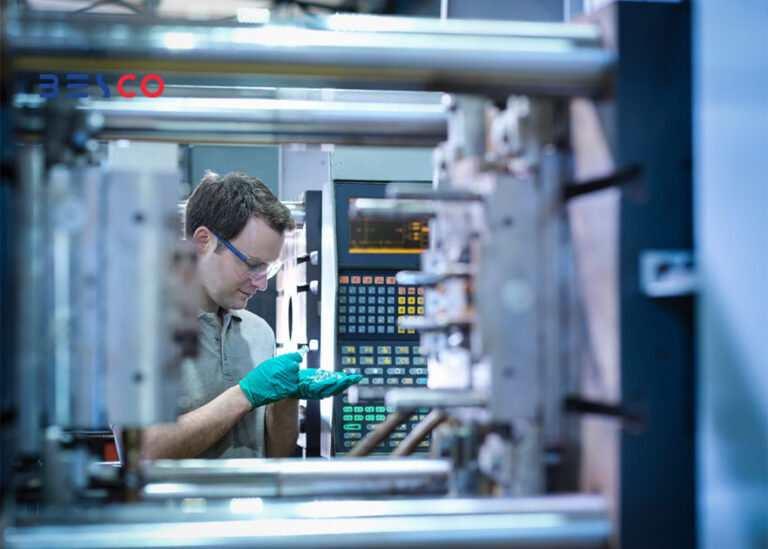Why Quality Control is Important in the Injection Molding Process
Quality control is a very much indispensable part of any injection molding business because the performance, durability, and customer satisfaction depend on the quality of the parts produced. The injection molding process starts from the selection of raw materials to the precise setting of machines for production. The following article takes a closer look at the role of quality control in injection molding and the steps involved with it.

1. Raw Material Selection and Its Influence on Final Quality
Selection of the right raw material is the first step in manufacturing for the assurance of quality in the parts. Each type of plastic material has its characteristics, such as heat resistance, strength, and flexibility. Quality control in this phase involves laboratory tests to ensure that the material properties will meet the requirements of the project. Low-quality material or impurities may result in defective and suboptimal parts.
2. Precise Machine Settings
The injection molding machine settings that are important in the process of injection molding include temperature, pressure, and time of injection. Slight alteration of any of these parameters is likely to lead to defective products, low strength, or undesirable change in the look and appearance of the products. Quality control at this stage is done by constantly monitoring and supervising the machines. This ensures that unexpected changes are timely detected and corrected on time.
3. Final Product Inspection and Testing
Quality inspections and tests on the produced parts to appraise the quality of the product, which may involve some very accurate measurements for dimensions, testing for strengths, and general inspection of the parts visually. Such quality control will ensure that there is a faultless end product for the customers to meet set standards before its delivery. On the same side, the customer satisfaction increases, while returning products is very costly to an organization.
4. Minimizing Waste and Increasing Productivity
Among the major objectives of quality control in injection molding are the minimization of waste and enhancement of productivity. The defective parts rate will be lesser if the process is under control, and also raw materials with energy resources would be utilized optimally. The result of all these is that it brings not only economic savings but also reduced environmental impact since resources are being wasted at minimal levels.
5. Training and Human Resources
The quality control can be well executed if there is a high level of skilled and experienced personnel. Operators and quality control specialists have to be qualified to spot defects and problems that affect the process. Continuous and refresher training keeps employees informed of recent quality control techniques that enable them to assure quality for the product coming from the line.
Key Quality Control Parameters in Injection Molding:
- Melt Temperature: Accurate temperature control of the plastic material to avoid problems such as cracking and breakage.
- Injection Pressure: Regulation of pressure to avoid defects like short shots or air cracks.
- Cooling Time: Time the part is allowed to cool in the mold to prevent warping or dimensional changes.
- Injection Speed: Injection speed regulation to avoid defects such as short shots or air cracks.
The Role of Quality Assurance in Injection Molding for Optimal Production
In the competitive field of injection molding, ensuring that each part meets the highest quality standards is crucial not only for maintaining brand reputation but also for fostering long-term business success. Quality assurance (QA) in injection molding spans multiple phases, from material selection to machine calibration and final product inspection.
The goal is to prevent defects at each stage, ensuring that the parts are durable, reliable, and meet the specified requirements. For manufacturers, investing in a robust QA system translates into cost savings, reduced waste, and improved customer satisfaction, all of which contribute to the overall efficiency of the production process.
متن سربرگ خود را وارد کنید
An essential component of a successful quality assurance strategy is the ability to adapt quickly to new materials and evolving production technologies. As the industry progresses, new plastic compounds and more advanced machinery are being introduced, which necessitate a dynamic approach to QA. For instance, advanced injection molding technologies like multi-shot molding or precision injection molding require higher levels of monitoring and adjustments to maintain product integrity. By continuously refining QA protocols and embracing innovative testing methods, manufacturers can stay ahead of industry trends, improve their production output, and reduce the risk of defects that could otherwise lead to costly recalls or product failures.
Conclusion
Quality control in injection molding is the most important aspect, without which no high-quality and cost-effective parts can be produced. Continuous and thorough quality control enhances product performance, increases customer satisfaction, and reduces the production cost. In this industry, success requires continuous monitoring of the processes and utilizing the best materials, equipment, and workforce at all times.
Quality control in injection molding involves a series of meticulous inspections and tests that help produce high-quality parts while reducing costs. By using advanced technologies and optimization processes, common problems can be avoided, leading to improved final product quality.
